While there are differing statistics regarding causes of aircraft fire-related accidents, it is safe to say that aircraft maintenance and pre-flight actions by the pilot play a significant role in most such events. And since the chances of surviving an in-flight fire without major injury or death are poor, preventing a fire from occurring in the first place should be Job One. Pilots can memorize procedures, talk about scenarios and what-ifs, but when it is all said and done, avoiding one starts on the ground.
Of course, fires require three key ingredients: heat or an ignition source, fuel or material that will burn, and oxygen (air). It so happens aircraft are operated hundreds of hours with these three key ingredients in close proximity. Thankfully, and due to careful design and maintenance practices, fires rarely occur. But seemingly minor details can be overlooked and introduce a chain of events that can cause an in-flight fire.
What To Look For During Your Pre-Flight Inspection
The pre-flight inspection is one of your last chances to find and fix conditions potentially leading to an in-flight fire. Pay close attention to these three broad areas:
Fuel
Any fuel odor in the cabin or obvious leak should be resolved before takeoff. Inspect the engine compartment for stains and security of fuel hoses and related components. Consider replacing old, stiff hoses with new ones, and don’t forget to add fireproof sheathing when the new ones are installed.
Electrical
Old wiring and electrical components, like those pictured in this derelict Mooney’s engine compartment, shouldn’t have gotten through the last annual inspection, anyway. Pay attention to frayed wiring, worn insulation, loose fasteners and the condition of rubber boots covering various connections. Wiring routed so it rubs against fuel or oil hoses should be an obvious no-no.
Exhaust
In addition to the risk of carbon monoxide entering the cabin, a failed exhaust system can dump extremely hot gases into the engine compartment, where melting of electrical wiring insulation and/or fuel lines can follow. Wiggle the exhaust pipes to check them for security and look for cracks or discoloration throughout the system.
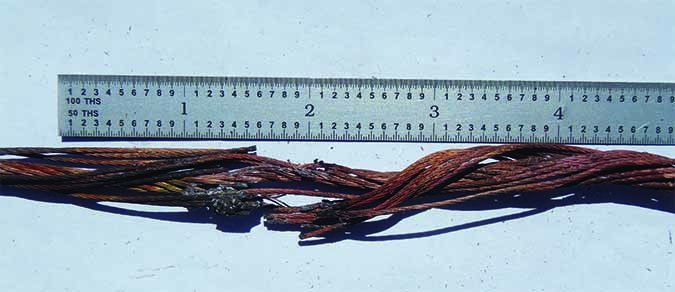
Aging Aircraft
For example, it’s no secret the general aviation fleet is aging and aircraft are not being operated as frequently as a few years ago. As older aircraft decline in value, simple economics may encourage owners and operators to defer maintenance, which can lead to greater risk of an in-flight fire. But even a well-maintained older aircraft may not be as immune to fire as a newer one of the same model. That’s because the older aircraft was designed and built before certification standards demanded reducing the risk of fire.
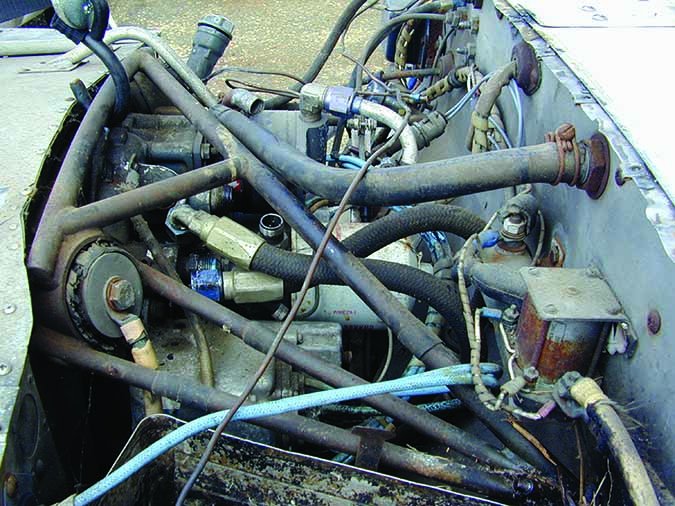
Contemporary aircraft certification standards include things like fire-blocked upholstery materials and non-combustible insulation. Meanwhile, a mid-1960s Bonanza, for instance, left the factory with plywood flooring panels and fabric insulation. Its engine instrumentation requires a small fuel line running to the instrument panel-mounted fuel pressure gauge. More modern aircraft provide fuel pressure instrumentation to the panel with electrical wiring.
Recognizing how standards and materials have changed over the years, the FAA in 2009 published Advisory Circular AC 23-27, Parts and Materials Substitution for Vintage Aircraft. While its focus is on sourcing and ensuring suitability of replacement parts for out-of-production aircraft, it notes “some of the materials used today for hoses and fabrics are better than those used when the vintage aircraft were originally built.”
The AC clearly recognizes that materials, manufacturing and repair processes have improved considerably since many general aviation aircraft were originally manufactured. Aircraft considered vintage by definition in this AC are those fixed-wing, unpressurized airplanes and sailplanes type certificated before January 1, 1980, with a maximum certified weight of 12,500 pounds or less. If that describes your aircraft, it’s likely some of the materials aboard it are not as fire-resistant as they could be.
Good Housekeeping
Beyond the materials and components comprising your aircraft, what about all the stuff you put in it? Items like hydraulic fluid or engine oil may not directly cause a fire, but if one develops, they can serve as an accelerant and/or generate excessive smoke. A recent event resulted in destruction of a general aviation aircraft when a weed whacker carried in the cabin as cargo leaked fuel in flight and the fuel was ignited. If you must carry such equipment containing flammable materials, take the necessary precautions to prevent a fuel spill.
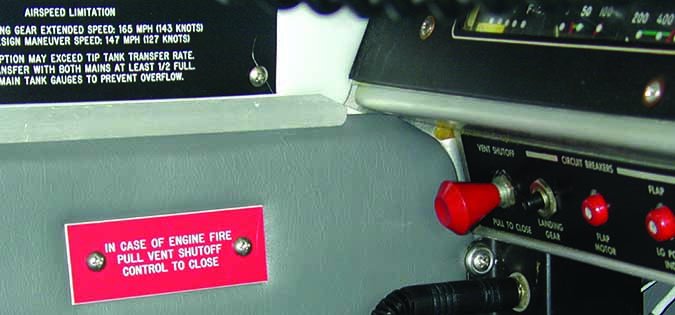
Meanwhile, keeping the overall aircraft clean not only helps prevent fires but makes detecting deficiencies like fuel, hydraulic or oil leaks easier. An overheated electrical wire or relay can ignite oil-soaked carpet or insulation, or accelerate a fire once it is started. Dust, lint and debris among electrical equipment and buss bars can allow a fire to develop when wiring overheats or switches/circuit breakers momentarily arc.
Electrical equipment should be cleaned only with non-metallic equipment or brushes and after electrical power is completely removed by disconnecting the battery—placing the master switch in the off position does not ensure all power is removed from the aircraft. When using motorized tools like a vacuum cleaner, make certain fuel vapors are completely purged from enclosed spaces like the cabin. Engine compartments, cowlings, landing gear and the aircraft’s belly should be kept clean of flammable materials. Do not use gasoline as a cleaning fluid, for obvious reasons.
Pre-Flight Checks
Technicians may inspect your aircraft once a year, yet every pilot should be looking at it in detail before each flight. It’s not revelatory to point out that a good pre-flight inspection can go a long way to preventing an in-flight fire. Pilots should take the time to really get into the task and understand what to look for, and know what is not airworthy. A visit with your maintenance technician during an annual inspection can help you identify areas requiring special emphasis. While pre-flight checks are not in-depth mechanical inspections, the condition of these systems can be a good indication of a potential problem.
Fuel
Don’t ignore telltale signs of fuel leaks or vapor odors when opening the cabin door. Does the fuel selector handle move freely through all the positions? Fuel valves must shut off completely the fuel supply to each engine so if a fire starts, it can be stopped. During your pre-flight, do you take enough time to be certain that each quick drain shuts off completely after use?
Flexible fuel lines are another item that needs to be checked during pre-flight for evidence of leaks, seeps and bulges, plus chafing in critical areas like the engine and firewall area. While hoses may look okay, the recommended replacement schedule is five years from its manufacture date.
Exhaust
While turbocharged aircraft exhaust systems may be more likely to develop problems, thanks to the extreme conditions under which they operate, other exhaust systems fail, also. Excessive engine or airframe vibration can also cause premature failure of exhaust systems and should be corrected.
As aircraft age, important exhaust system components such as heat shields and clamps may become displaced or installed incorrectly, or are removed completely for various reasons. These parts are very important and must be installed correctly and kept in good condition.
Any rotational movement between the muffler and exhaust (tail) pipe such as during pre-flight for example would be grounds for investigation to determine if in fact the exhaust system is properly connected. If you smell exhaust during aircraft operation or spot evidence of an exhaust leak during a pre-flight inspection, it’s imperative that the system be checked carefully by a certified mechanic.
Meanwhile, the high heat conditions a turbocharged exhaust system experiences is enough to easily light off flammable liquids such as fuel, oil or hydraulic fluid when leaked or sprayed onto an exhaust system component. Operation with abnormally high EGT, TIT, or cylinder head temperature indications can cause additional stress on exhaust system components, resulting in early failure and a fire.
Electrical
As aircraft age, so does their electrical wiring, especially in areas of high vibration and heat, i.e., in and around the engine compartment. Wiring that is cracked or has oil-soaked insulation should be replaced. Aircraft may still be equipped with aluminum wire, which should be replaced with approved copper wiring. Lead acid storage batteries must be contained in an approved battery box with a lid that must be vented to the outside of the aircraft. All of these components and the vent lines as well must be installed and functional to prevent explosive hydrogen gas from entering the aircraft.
When replacing light bulbs, are you certain the component you are installing is correct for the application? Not only is the rating of the bulb important, so is its shape and the corresponding fixture it’s mounted in. Always use the proper FAA-approved component and make certain the fixture is complete and intact. When changing a lamp or other electrical device, disconnecting the battery is the only way to be certain that every electrical circuit is deactivated.
Electrical wiring passing through the firewall or other sheet metal must be protected from chafing by a grommet or other protective device. If you can move the wiring through the grommet or hole, there is a good chance for insulation to be damaged—a short circuit and fire may result.
While on the subject of firewalls, it’s important that they be maintained to withstand high temperatures and prevent fire and smoke from entering the aircraft cabin. If you can see daylight through openings in the firewall, then fire and smoke can pass through these holes, too, causing incapacitation of the pilot and passengers. It’s also important to note that mounting electrical/electronic devices to the cabin side of a firewall can be hazardous during a fire/heat event. Anything attached directly to the inside of the firewall can be subjected to temperatures in excess of 1000 degrees F.
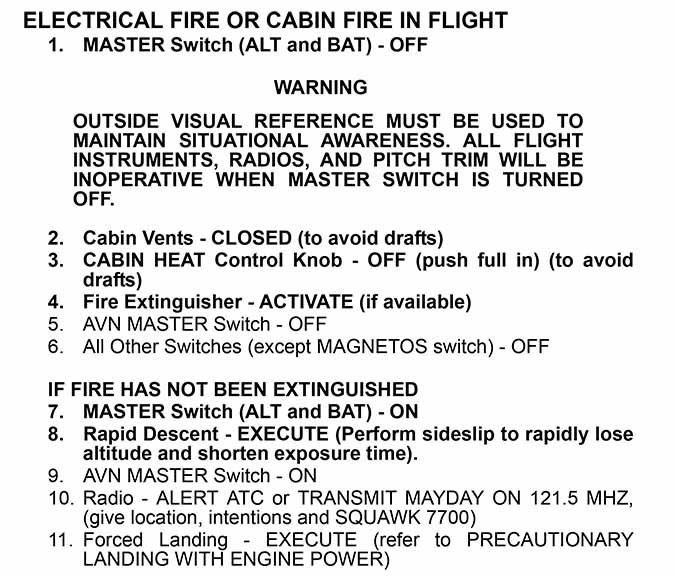
Operational Considerations
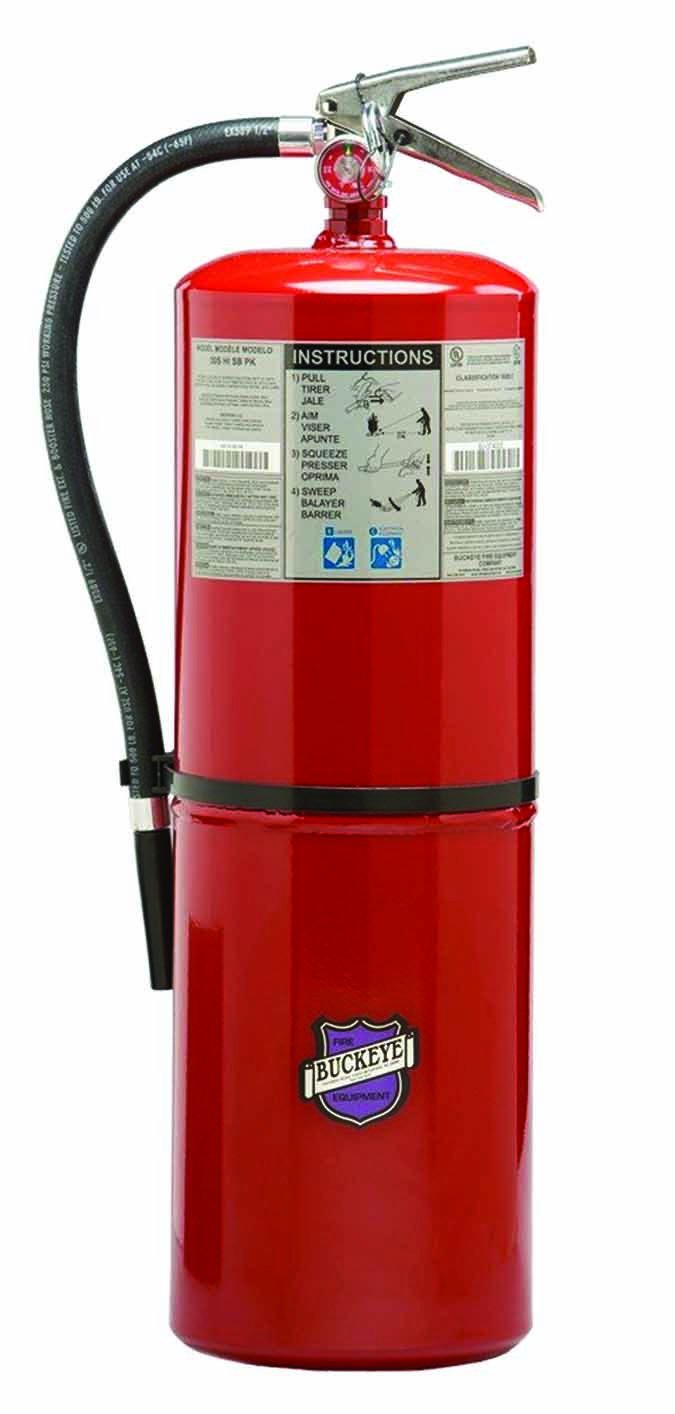
A fire can occur anytime an aircraft is being operated. With cold weather approaching, a somewhat different set of circumstances may occur that can cause a fire during engine start. It is important to have a fully charged battery during the engine start sequence as backfires sometimes arise and an induction fire can happen. The proper way of dealing with an induction system fire is to continue cranking the engine, pulling the flames and fuel vapor back into the engine where it belongs, while the mixture control is moved to the idle cutoff position and the fuel selector is turned off.
While fires are rare occurrences, it is important to react quickly as any delayed action by the pilot can allow a fire to fully develop and may prevent extinguishing the fire. My research into accidents relating to pre-crash fires indicates that in almost every case of a single-engine airplane, it appeared to be controllable and not structurally compromised yet not under the pilot’s control. Multiengine airplanes were more susceptible to structural failure as a result of fire and heat behind the engine compromising the wing structure and, in extreme cases, causing the wing to separate.

As a pilot, you may be required to shut off the fuel or electrical supply to the engine to extinguish a fire and land immediately, airport or not. The sooner you can get on the ground (or water), the better your chances of survival. While commercial aircraft are required to carry quite an array of emergency equipment, private aircraft aren’t. Consider carrying a self-contained smoke hood, a fire extinguisher and other equipment as space and weight allow.
Final Thoughts
Keeping the proper mindset can go a long way toward ensuring that you are never the cause of or involved in an aircraft-related fire, whether in-flight or on the ground. Are you in the habit of grounding your aircraft every time you refuel, or just when it’s convenient? Do you honestly allocate the time necessary to do a good pre-flight and don’t fly an aircraft in questionable mechanical condition, even if it’s a rental? Do you know where you are at all times and where would be a suitable place for an emergency landing?
As an aircraft owner, do you actively direct and participate in the maintenance of your aircraft? Do you regularly review AD notes and service bulletins with your mechanic for compliance, and adhere to the maintenance and inspection requirements for your aircraft as recommended by the manufacturer? Good aircraft maintenance according to recommended practices can go a long way to preventing a fire.
Mike Berry is a 17,000-hour airline transport pilot, is type-rated in the B727 and B757, and holds an A&P ticket with inspection authorization.

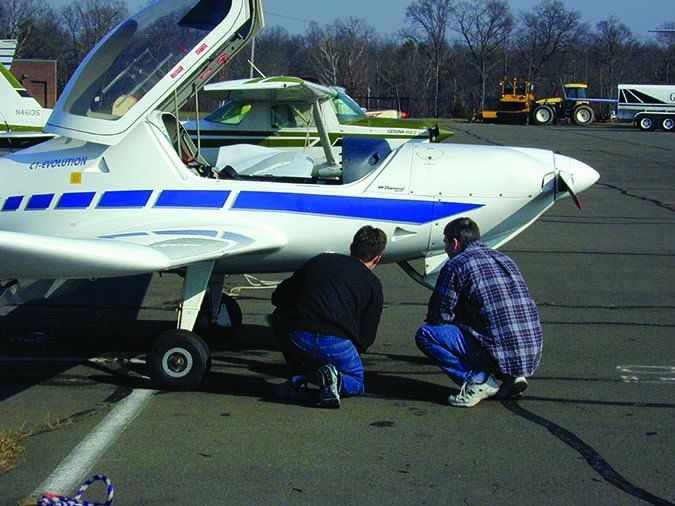



I carry a small bag with 2 pair of leather gloves, Two sets of swim goggles to keep smoke out of eyes. Surgical masks to keep the smoke out of my lungs. This bag is attached to my flight bag with handheld radio, log book, charts flash lights that is always under my legs just in front of my seat. I can always reach into this bag for needed equipment. The separate bag clips to this bag so I could find it by feel if necessary. It is a preflight check item to mention this bag and its contents before each flight. Fred Q CFIi